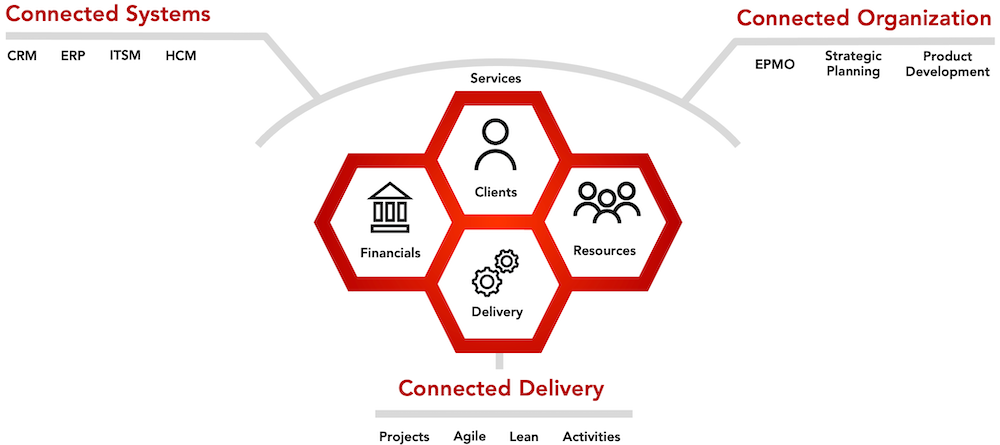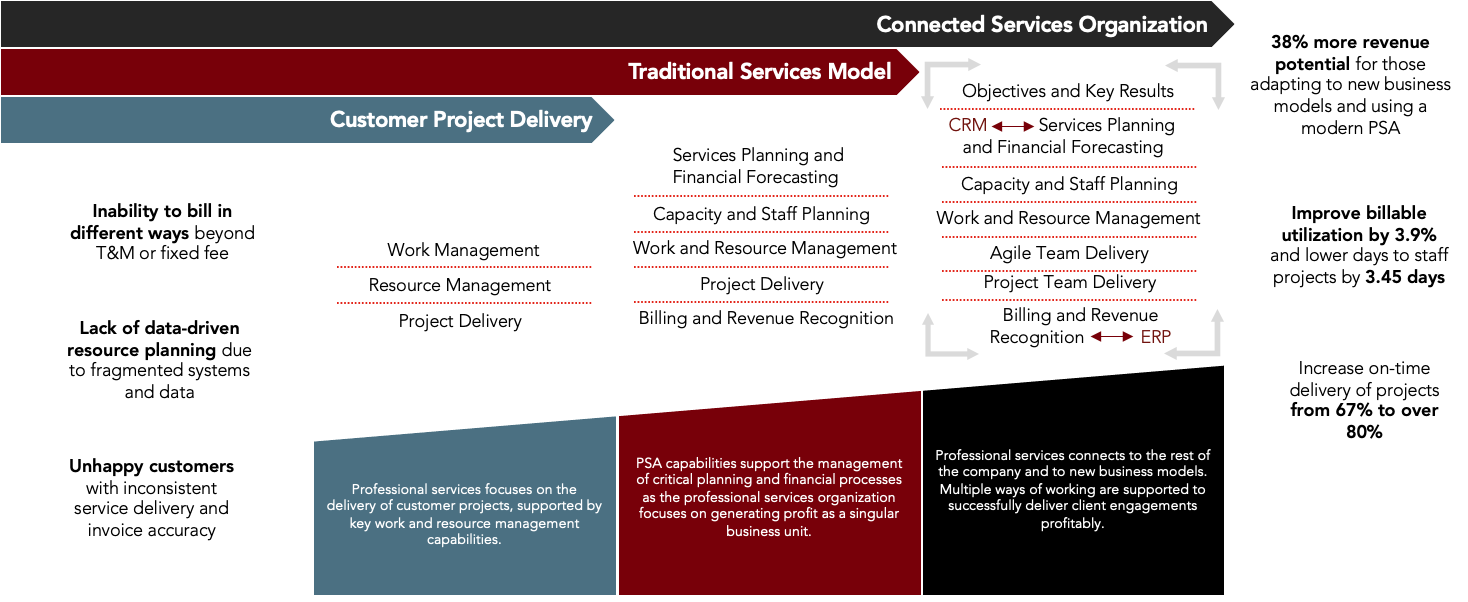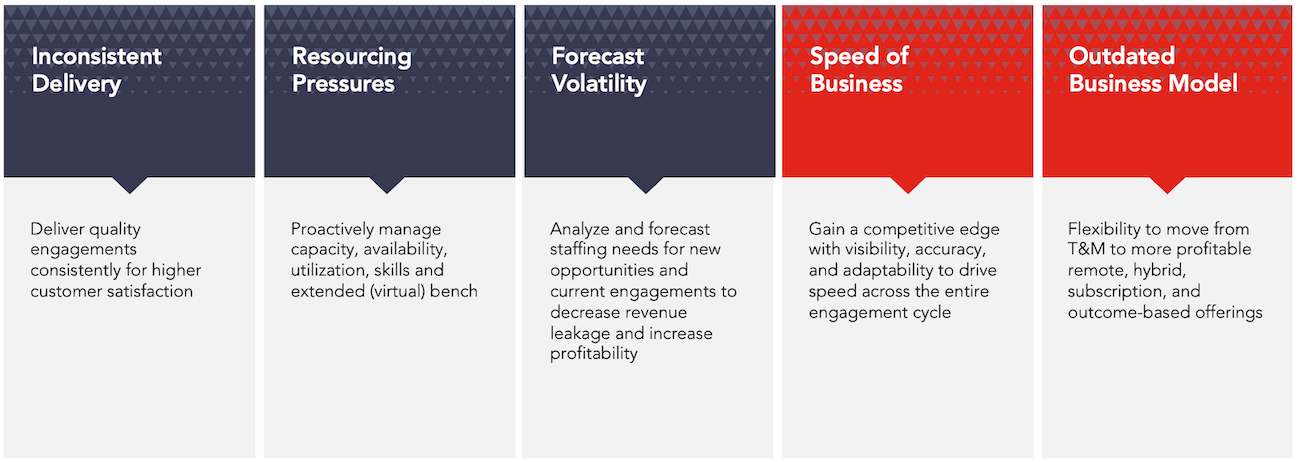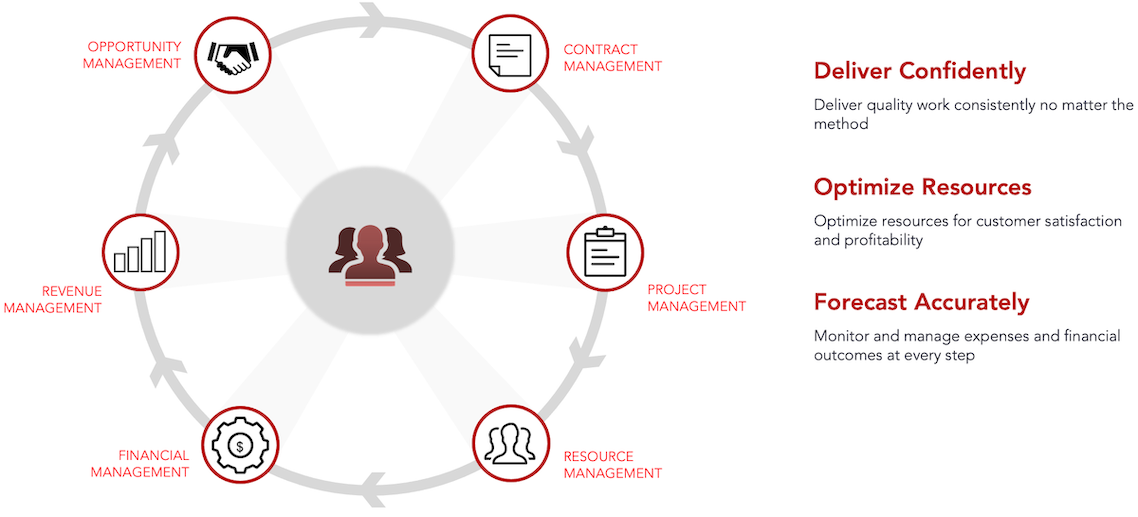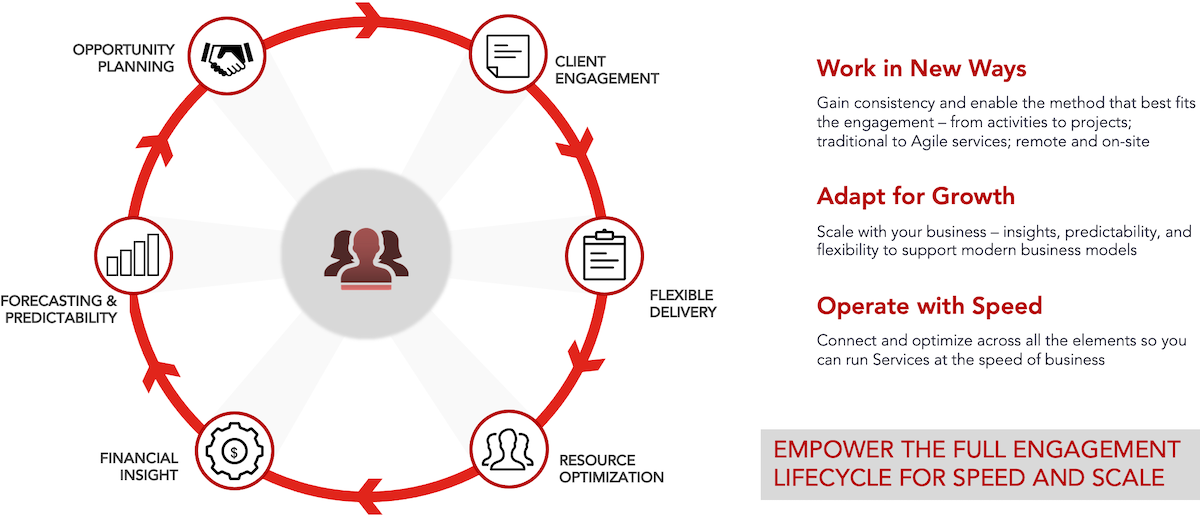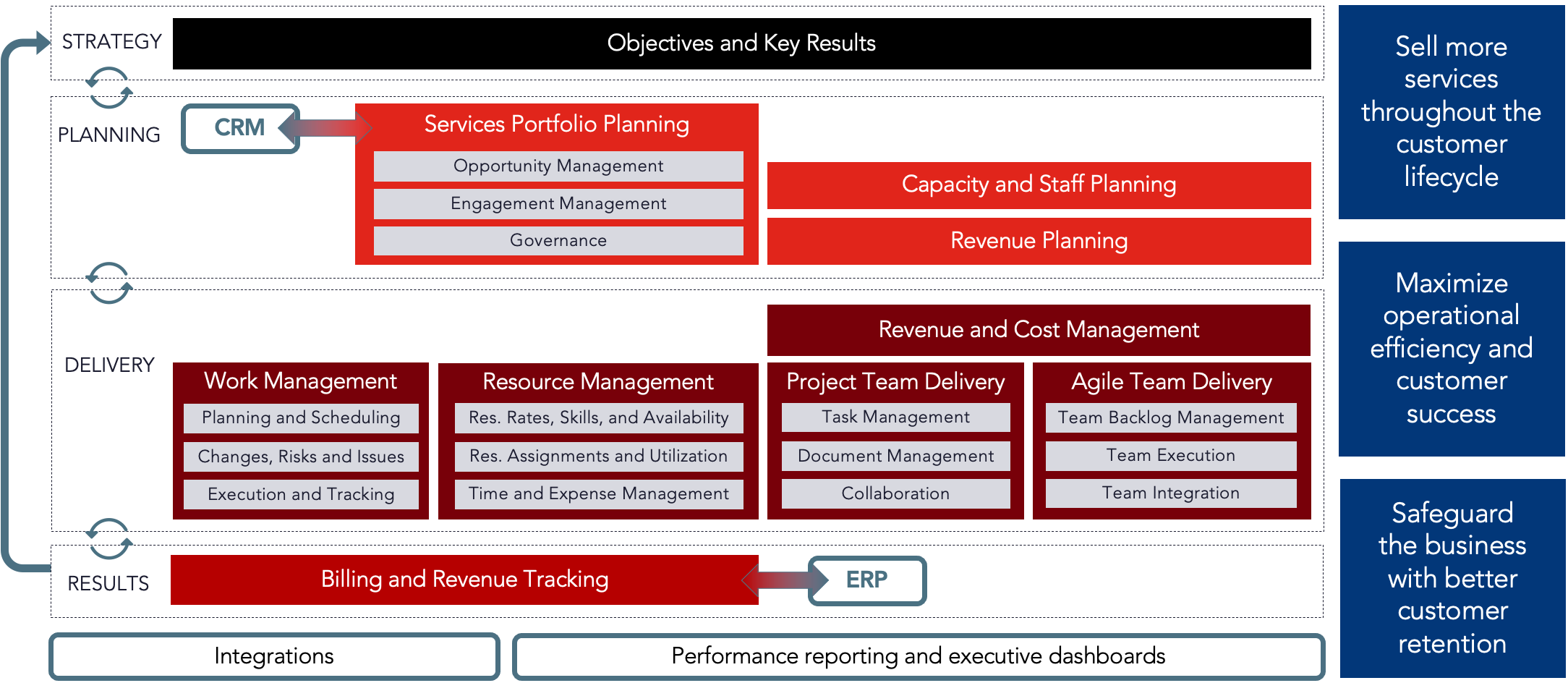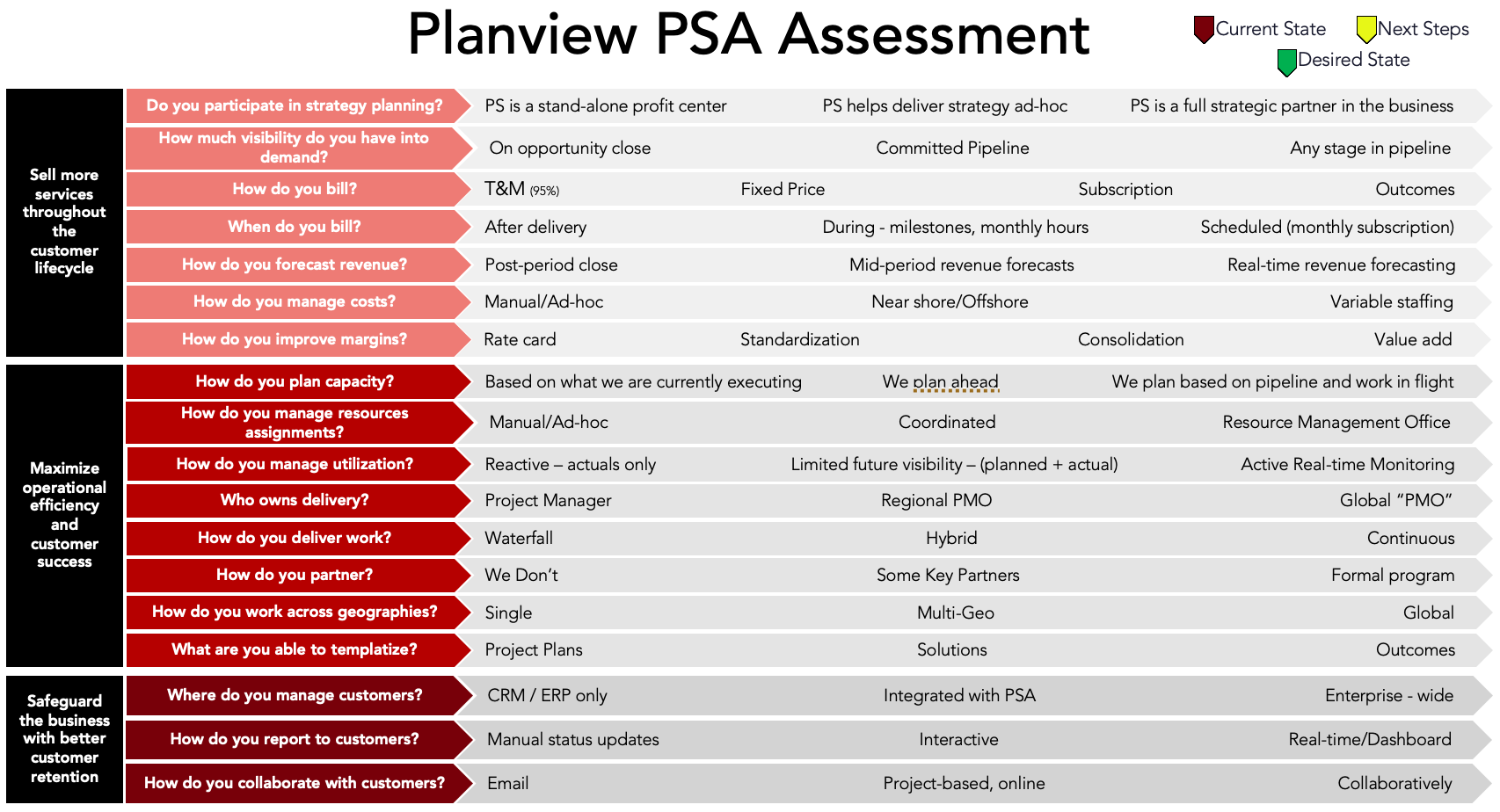Planview Professional Services Automation Journey

Today's services organizations are facing change and uncertainty in ways they never have before. Planview’s Professional Services Automation (PSA) journey serves as a guide to meeting these challenges by streamlining the entire services lifecycle. The information and tools provided in the sections below are designed to help you understand and navigate this journey to becoming a connected services organization.

Get Help Along the Way
If you need additional support as you make this transition, Planview offers several services to help you throughout the process.
Evolve Advisory ServicesWe partner with you, get to know your business, and apply our knowledge of best practices to help you achieve your strategic business outcomes. |
Planview Professional ServicesOur global team is here to help with FastTrack implementation services specifically tailored to target common organizational needs and quickly drive tangible results. |
Remote Advisory Service (RAS) HoursThese are specialized hours designed to help address specific customer needs, bridging the gap between Customer Care and on-site Planview Consulting, allowing you to receive quick and cost-effective enablement. |
Customer Success
For assistance with the customer journey workshop materials or defining your own customer-specific journey that aligns to Planview capabilities and delivers the business outcomes you need, reach out to your Customer Success Manager. If you don't have a Customer Success Manager, reach out to our Customer Success Specialist teams for Planview AdaptiveWork.
For technical or product support questions, please reach out to the Planview Customer Care team.


